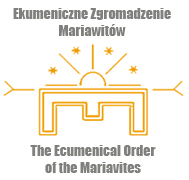Almighty God, whose Son our Savior Jesus Christ was lifted high upon the cross that he might draw the whole world to himself: Mercifully grant that we, who glory in the mystery of our redemption, may have grace to take up our cross and follow him; who lives and reigns with you and the Holy Spirit, one God, in glory everlasting. Amen.
Collect of the Day according to the BCP
Today (September 13) is the Holy Cross Day. According to legends, the “True Cross” was discovered in 326 by Saint Helena, the mother of the Roman Emperor Constantine the Great, during a pilgrimage she made to Jerusalem. When the “True Cross” was identified after a wonder had happened, it was lifted on high for all the people to see, who then continually sang Kyrie eleison, a practice which is still enacted at current celebrations of this feast in the Eastern Churches. The Church of the Holy Sepulchre was then built at the location of the discovery, by order of Helena and Constantine. The date of the feast marks the dedication of the Church in 335. This was a two-day festival: although the actual consecration took place on September 13, the cross itself was brought outside the Church on September 14 so that the people could come forward to venerate the “True Cross” and pray before it.
Yet another legend tells that in 614 a portion of the cross was carried away from the Church by the Persians as a prize of war when they sacked Jerusalem, and remained missing until it was recaptured by the Byzantine Emperor Heraclius in 628. Initially taken to Constantinople, the “True Cross” was returned to the church the following year.
Orthodox theologian, Fr. Thomas Hopko, writes:
The day of the Elevation of the Cross became, as it were, the national holiday of the Eastern Christian Empire similar to the Fourth of July in the United States.
And what meaning can it have for us today? According to Fr. Thomas:
The holy day of the Elevation of the Cross, although it has an obviously “political” origin, has a place of great significance in the Church today. It remains with us as a day of fasting and prayer, a day when we recall that the Cross is the only sign worthy of our total allegiance, and that our salvation comes not by “victories” of any earthly sort but by the only true and lasting victory of the crucifixion of Christ and our co-crucifixion with him.
Often we may hear the accusation that the omnipresence of the cross in Christian symbolism reveals its masochistic character, its tendency to glorify suffering. We can’t deny that such tendencies existed and still exist in Christianity. But we can also look at the cross and the meaning of today’s feast in another way. Each of us has natural inclination not only toward avoiding suffering, but also turning our eyes from it, not seeing it. The cross, if only we realize its meaning, if only we haven’t domesticated it too much, haven’t deprived it of its scandalous dimension, which always has been there and should remain forever, makes it impossible. It forces us to “look life in the eyes” in a way, including those aspects of it which we would rather not see. It would be good if today’s feast became the feast of realism, a recurring protest against every form of religious escapism. Perhaps we should add to today’s readings the famous quote from Karl Marx: “religion is opium of the people”, and seriously ponder what should be done so that it isn’t like that.




